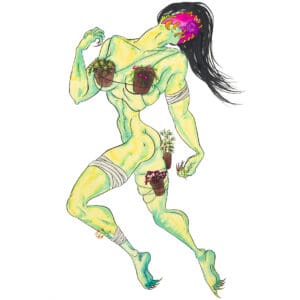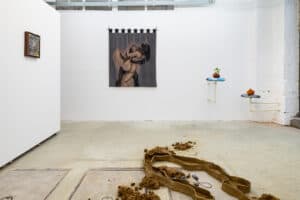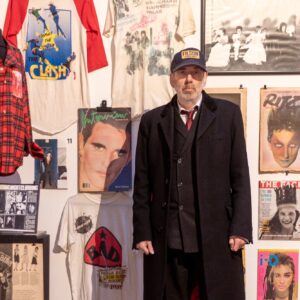Multidisciplinary artist Saelia Aparicio implements various mediums to highlight her interest in the human body, folklore, popular culture, and Femme’s empowerment and agency. Their use of materials explores the intersection between design, craft, and fine art, which Sae seamlessly utilizes to create artwork that ranges between portraiture and design objects, all of which are interconnected.
Aparicio’s exploration through a diversity of mediums has created many opportunities for collaborations. They have created lamps with glass artists, textiles with fashion designers, stools with engineers—these objects allow participants to appreciate and contemplate her art outside of a traditional art space.
Aparicio is highly fascinated with the ticking, leaking, morphing, and moving parts of the human body. The characters depicted are stylized, vibrant, and familiar due to her interest in graffiti, anime, films, and found objects. Visually, her artwork is colorful and energetic and possesses many playful qualities. However, Aparicio uses humor and playfulness to accentuate dark and pressing issues within society and the world at large. Aparicio believes that a lighthearted approach to a serious situation allows certain subjects to be less intimidating, providing food for thought in an accessible way.
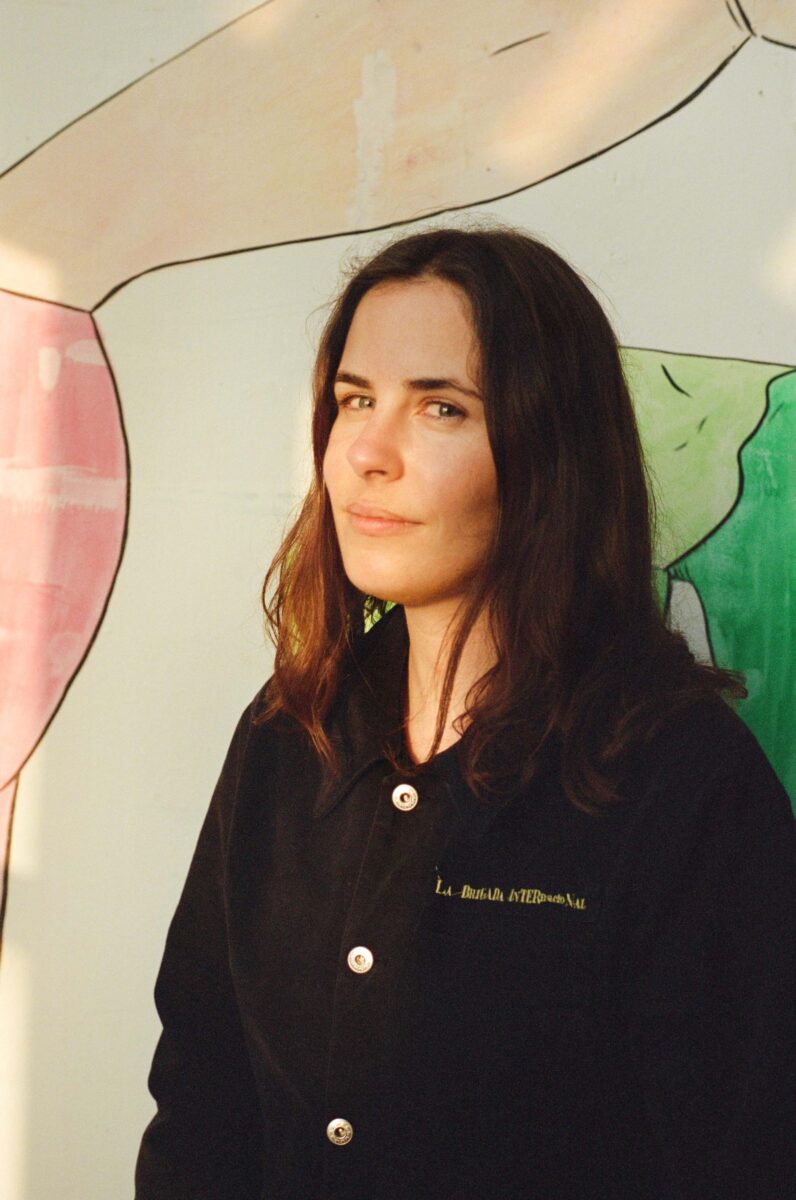
Originally from Spain, Aparicio lives and works in London. They previously studied at the Universidad de Castilla-La Mancha and earned her MFA in sculpture at the Royal College of Art. They have exhibited internationally at Friedman Benda, New York; carlier | gebauer, Berlin; Vitrine Gallery, London; Gallery Fumi, London; The Stanley & Audrey Burton Gallery, Leeds, UK; Sarabande Foundation, London; Public Gallery, London; Thyssen-Bornemisza Art Contemporary, Madrid; Saatchi Gallery, London; MK Gallery, Milton Keynes, UK; Museo de Arte Contemporáneo de Castilla y León, Spain; Institute of Contemporary Arts, London; and Seoul Museum of Art, South Korea.
Aparicio’s current exhibition, Les Fleurs du Mal, is part of the 2024 Programme: COMMUNION at Bold Tendencies, London.
They will be exhibiting with Cylinder Gallery; Seoul in Fall 2024 and Baltic Centre for Contemporary Art; UK in Spring 2025.
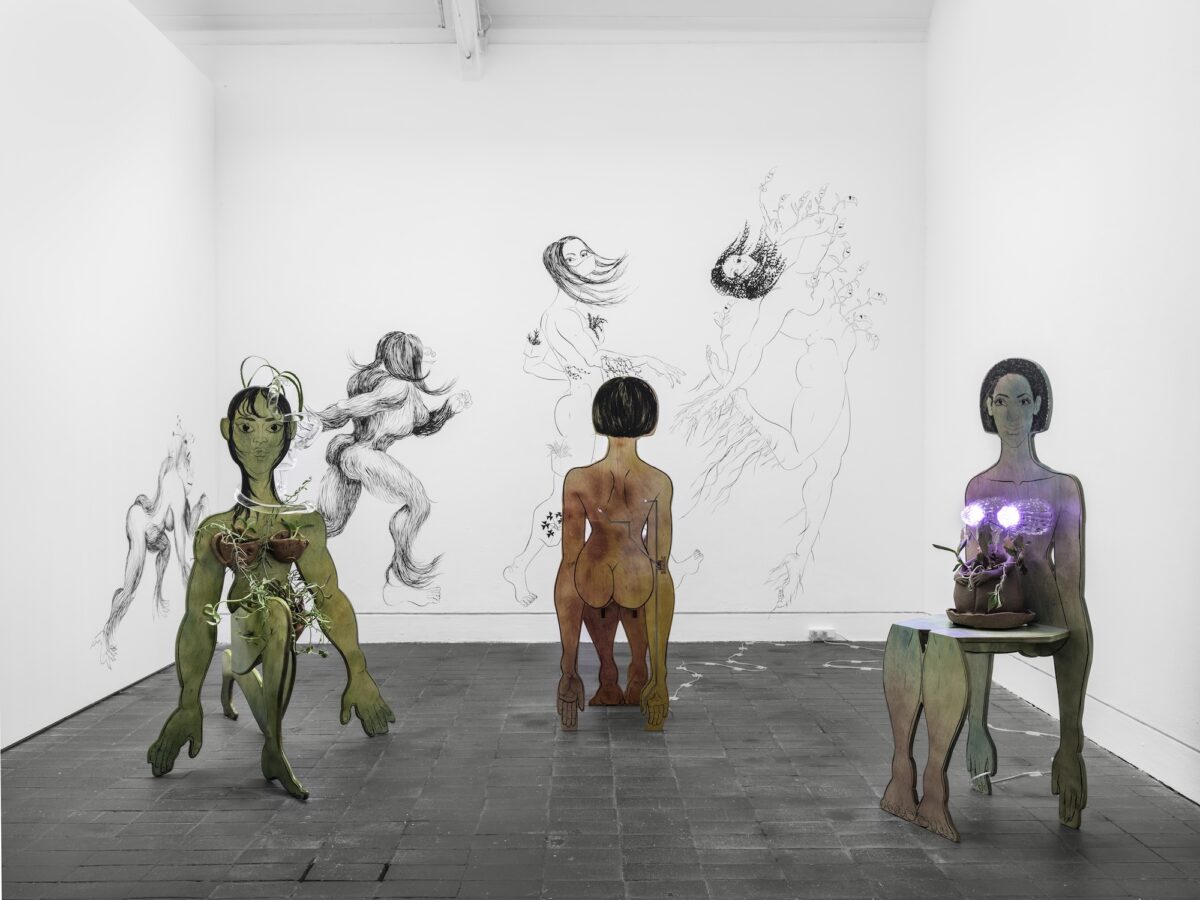
You grew up in Valladolid, about an hour outside of Madrid, both of which are very culturally rich cities. Did your family take in all the arts institutions that were available, or did this interest come later for you?
We didn’t travel a lot to Madrid, but on the weekends we will go to the countryside or nearer cities like Leon, Burgos or Zamora, to see nature, mediaeval churches or archeological sites, which I think has influenced me a lot. I was always in awe of the different cultures that had been in a region: Celtic, Roman, Muslim, and Catholic, and their crossings like folk influenced or Mudejar: using Muslim craft and aesthetics in Catholic buildings. We didn’t have a TV at home when we were growing up, but I went to a kids’ cinema cycle with my twin sister and also read lots of manga and comics, or we would go to the library and read lots.
And there is a gem in Valladolid: The National Museum of Sculpture, with works like La Muerte (the Death) by Gil de Ronza or la Magdalena penitente by Pedro de Mena.
There is currently an exhibition of your newest work at Bold Tendencies in London. This is the first time that you’ve exhibited work in an outside environment. Can you discuss some of the interesting challenges and ideas that came to you while configuring this space?
Yes it has been the first time making outdoor sculpture, it was something new to me, it was great:. The Bold Tendencies team, and the metal fabricators from Flux metal were both amazing, really helpful. Also the Architect Oscar Mcguire, who helped me digitise the drawings. The whole process was done in a relatively short time. They are laser cut metal structures, then galvanised, powder coated and hand painted. I really want them to be both durable and easily repaired.
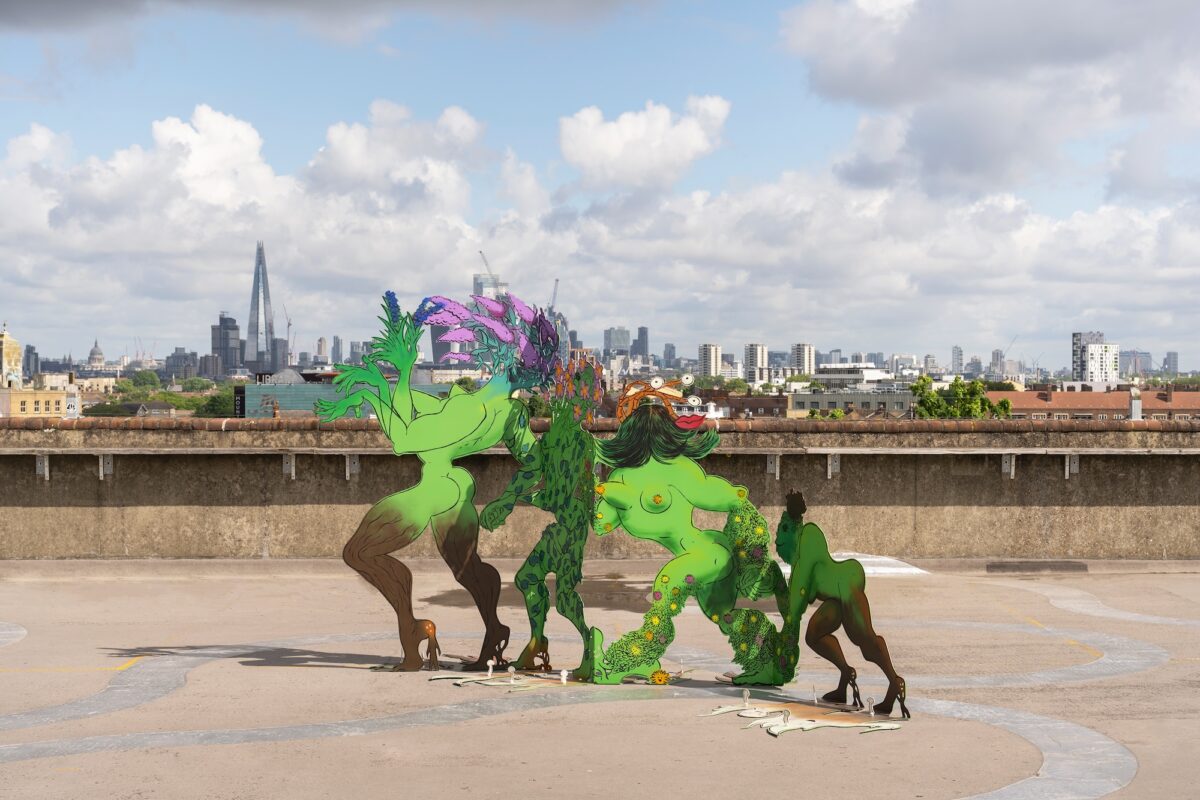
The installation, Les Fleurs du Mal is composed by 5 hybrids between plant and humans that mimic architectural constructions through dance moves, contrasting the idea of the movement of the dance with the stillness of a building and a plant.
The architectural pieces referenced are follies, ornamental buildings used in landscapes and gardens with no functional purpose, just to help to construct an atmosphere, it is something very eccentric, very english. Sometimes they were built as ruins. I have been thinking a lot about the ruin as a fertile ground. How when something decays, it is an opportunity for other species to thrive.
The plants on the sculpture are various species of invasive flora such as Oxalis, English ivy, Spanish bluebell, Buddleia, wisteria, kudzu vine, Russian vine and Japanese knotweed, I use them as an allegory of they way we look at nature, the language around them, and how this language reverts back to us
I find when we classify living beings plants are mostly divided into: wilderness, crops,ornamental species, house plants and then there are Weeds, which is when plants grow in areas not designated by humans, not of interest but sort of a vegetable pest as they dont fit and may compete with any of the other previous categories.
The species I focus on were introduced mostly by the Victorians as ornamental species. First praised for their exoticism, and then blamed for their capacity to adapt and thrive. As plants are not considered sentient conscious beings by most people, This is not only a blame-shifting narrative that lacks accountability, it is also xenophobic: who brought these plants in the first place, and in which circumstances?
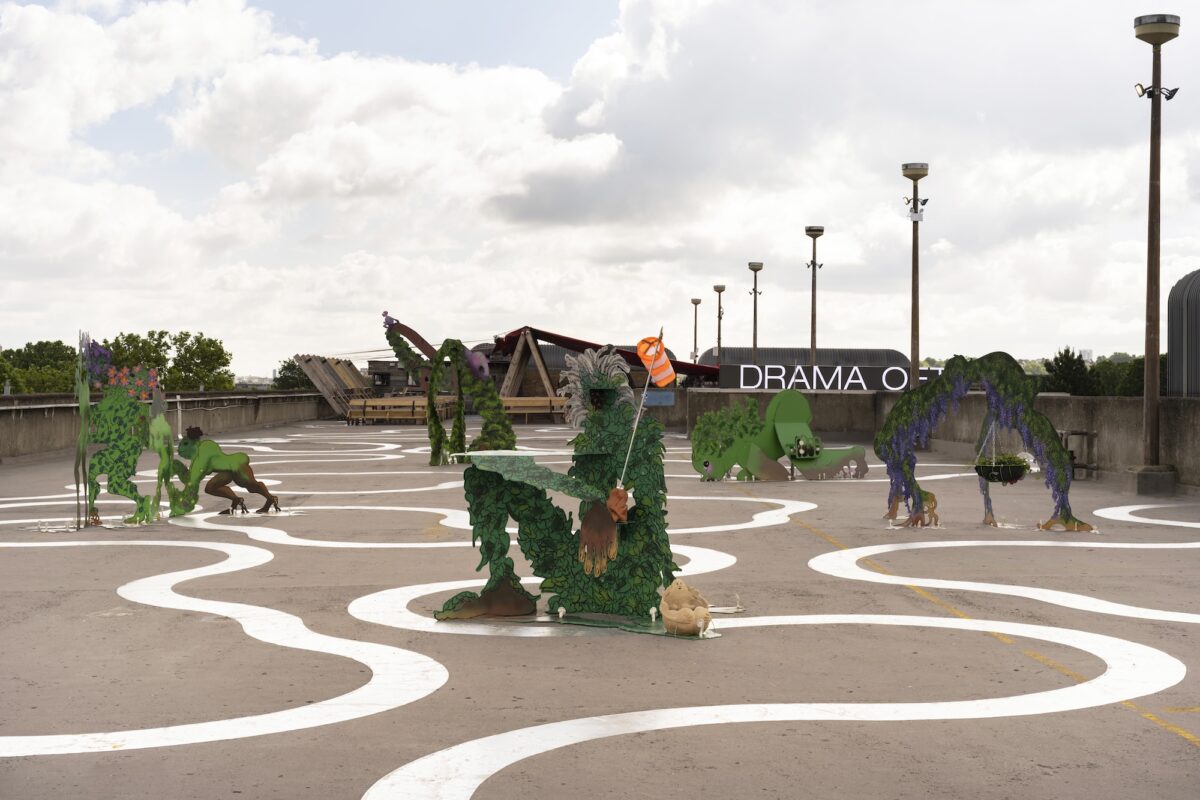
How far do we go to preserve our native species?
This is a situation that mirrors in colonised land where aboriginal species were seen as weeds, and replaced by European species.
It’s true that sometimes so-called invasive species replace native flora and fauna, and alter the soil balanced), but I have also read that nature self-regulates itself (cal FLynn islands of abandonment, or the mushroom at the end of the world), and after a period of being monospecies, local or other species are naturally reintroduced. We only look from our human perception of time, and also of nature as being something passive, a resource for us to dominate, almost forgetting that we are nature.
Your artwork moves beyond realistic representation, yet it’s familiar and comforting. Did the journey towards your visual language feel natural and linear, or did you venture off every now and again?
I don’t think it has been linear at all, quite the opposite, I think I was figuring things out for a very long time. An important moment for me was in 2019 I changed lots of materials I was working with as they were toxic. And in 2020, during lockdown, influenced by Eco-Anxiety and how paralysing it can be, I started researching about joy, and that has been a constant in my work since then, I want to talk about ecology with a positive note, I think this apocalyptic, deterministic vision has been always there through history, and in my opinion it is a motor of change. To me, joy is basically being grateful to be alive, be together with people, appreciate our contemporary, past and future.
And… I think I will still venture off and on, because I like experimenting, and love researching and establishing new connections between subjects. I love complexity because I think it is a more accurate way of relating with almost every subject, if not all: I don’t think anything is simple at all.
I don’t think you can be pinned down as an artist. There are sculptors and painters who are immediately identifiable because they have such a signature style, but you work within a wide variety of mediums—while the ideas are consistent, the execution is varied. When you have ideas for an artwork or object, do you pass it through all the potential scenarios of production, or is the conception clear based on the initial idea?
Everything starts from drawing and notes. I am quite disorganised and always have a few notebooks lingering around, and I draw on them the same character over and over again, so it keeps evolving. It is during this ongoing process that plants work with different materials. I’m interested in the liquidity of glass,the immediacy of clay, the warmth of wood and the precision of metal, and how with colour and line you can transform them into literally anything. I like working with found and salvaged objects (specially glass and metal) as the starting point of some of my works, taking them out of context, expanding their meaning and life.
Is there any difference to you when it comes to murals, ceramics, sculpture, video, or any of the other mediums you work with? Do you find any of the mediums more challenging and less forgiving than others?
I definitely find some mediums more challenging than others, with murals or drawings it is easier, I planned a bit,but I go straight into them, and it is like the ink flows and sprawls in the space, on the other hand with ceramics and feel gravity and moisture are never on my side. I started making ceramics during lockdown, and I want to improve my technical knowledge, because I feel limited by it, which is also something I like. When I am working with wood, metal, glass, I think I understand the material quite well, so I always plan to do things that are possible.
This year, for Gallery Fumi, I will be working with bronze for the first time. I am going to make little characters using half deflated balloons, condoms, and cleaning gloves as moulds. They will look humorous, floppy and cute, with light coming out of them… I am very excited about this: until 2019 I used to make sculptures using latex everyday objects as moulds, but I (begrudly) stopped: I was making them in epoxy resin and plaster based resin, and I want to avoid as much as possible to work materials that leach toxic stuff to the environment. I do think about the materiality as part of the narrative as well.
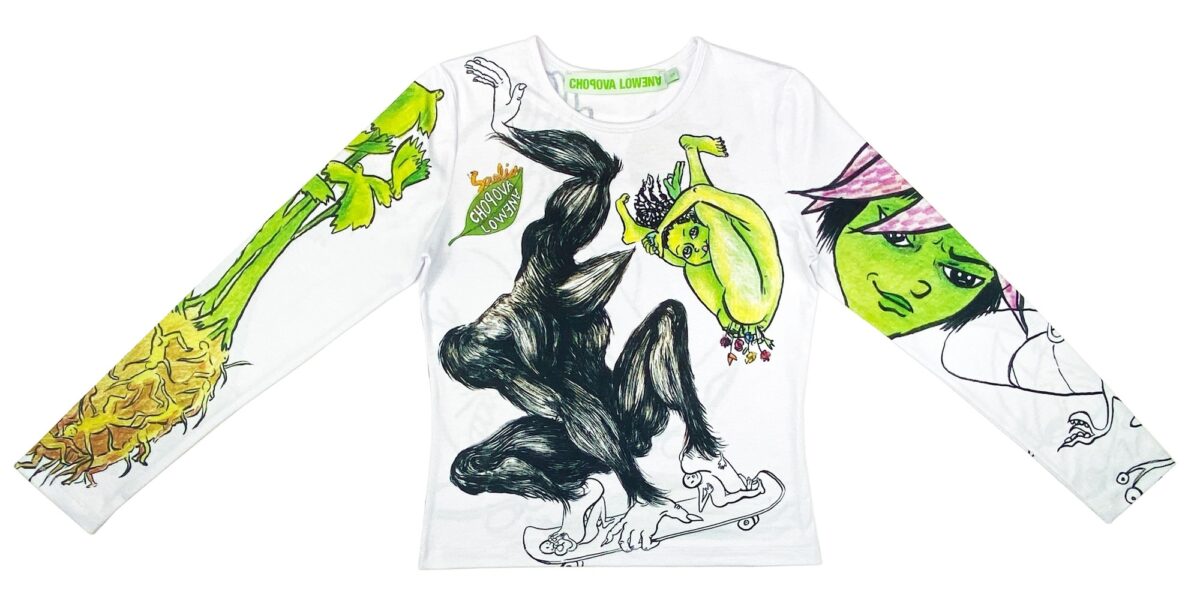
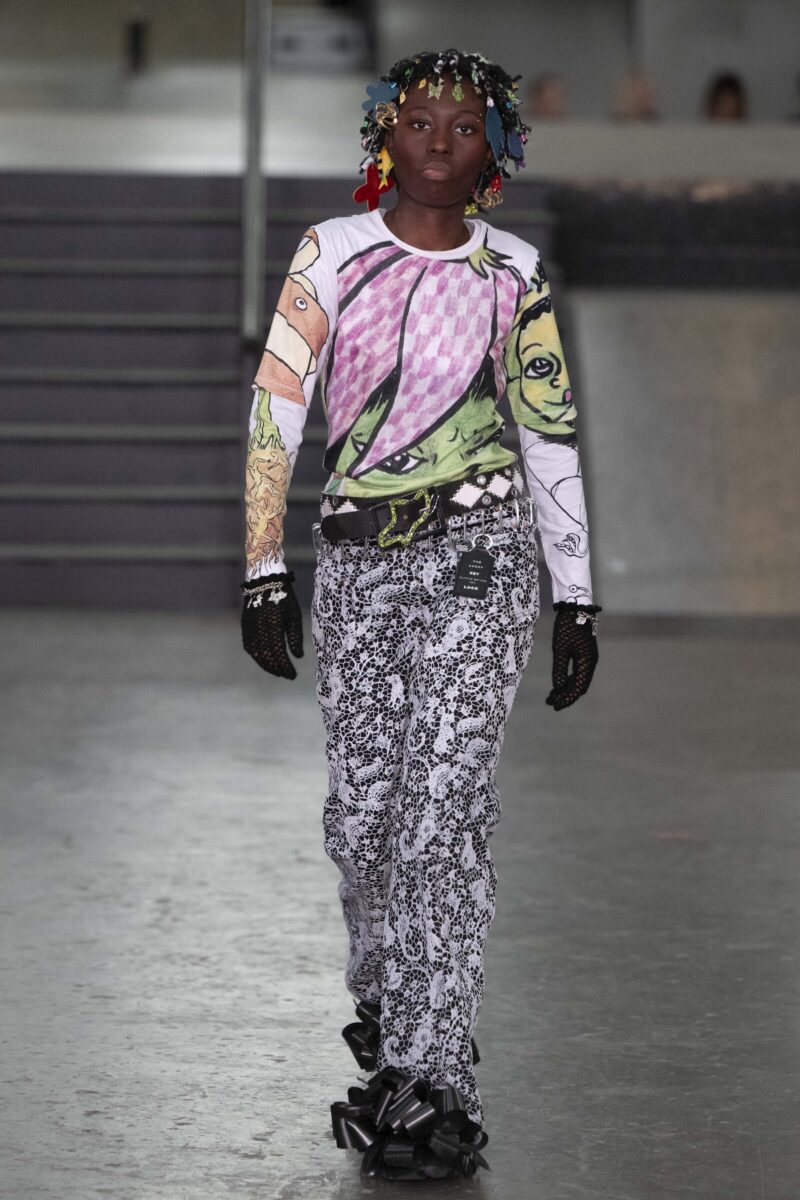
Your artwork can function as a hybrid: some objects have utilitarian features and can be used as everyday objects. Can you describe your interest in working in this realm and other potential objects of interest?
I am interested in feminist artist who started making functional sculpture in the 60s and 70s such as Teresa Burgas, Nicola L, Etel Adnan (also an amazing poet), Marisol, Alina Szapocznikow, Yayoi Kusama…I want to continue their legacy and take into a non binary world, which is directly influenced by my own experience of gender dysphoria. I think all those artists use functional objects to criticise and question in a playful way the expected passiveness of females and also how the domestic was considered less important.
This idea of the non binary also relates to the idea of the hybrid, which is very present in my work. I find fascinating to see how hybrids figures appear in different cultures all over the world, from ancient egypt or mesopotamian to native american or christianity. They are always as supernatural beings, ambivalent creatures, sometimes demonic, sometimes divine. I think this is related to how we classify everything through language. Hybrids have the superpower to escape the confines of categorization, expanding beyond their realms, functioning as bridges between them.
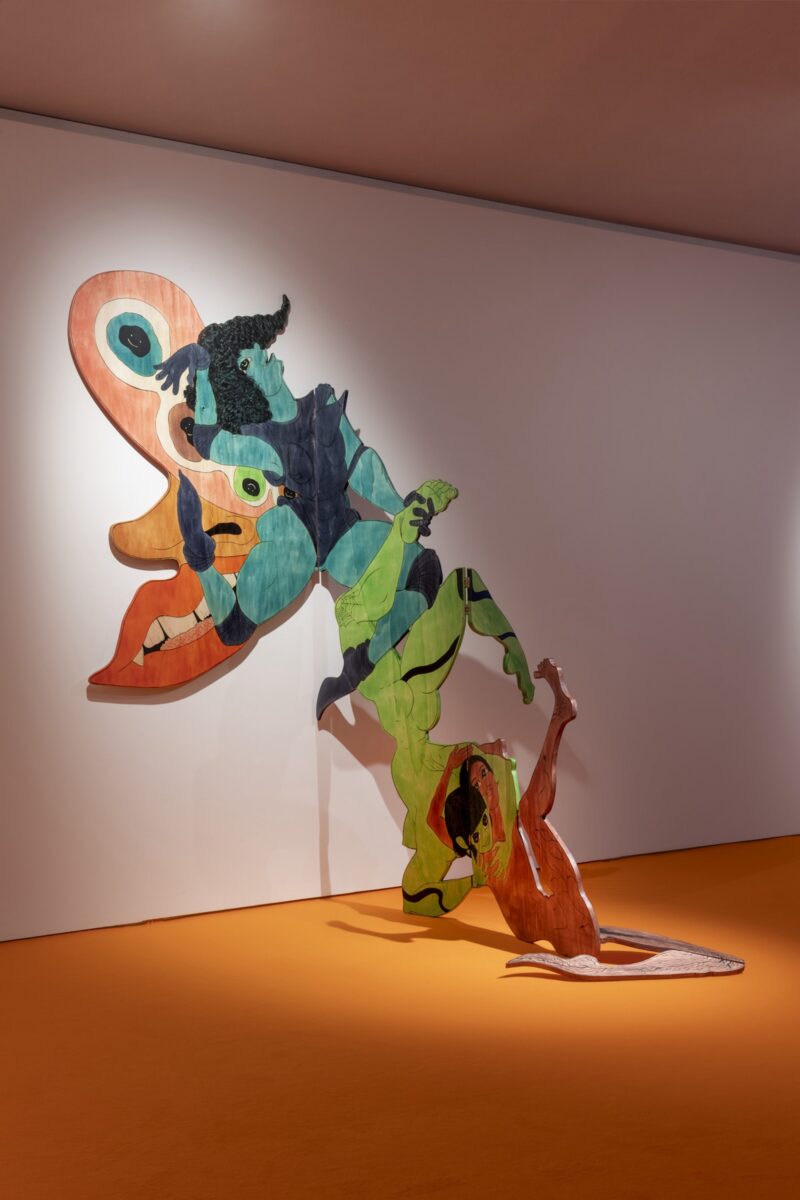
At first glance, your artwork can be seen as bright and comical, but you sometimes delve into serious socio-political issues. Previous artworks have highlighted crises of pollution, housing, climate, and gender equity, just to name a few. Can you speak on why these very real issues are important for you to reference in your artwork?
Because I believe in the potential of culture as a motor of change. It can still be a reflection of our current time. I consider myself an intersectional feminist where all those crises you mentioned in the question (and more) are related: Mark Fisher in his essay capitalism realism, talks about how we perceive capitalism as being the only viable system,(would be easier to imagine the end of the world that the end of capitalism when it is actually really not as capitalism is unviable, unsustainable and based in exploitation.
It is a learning process for me as well, I think our society is very antagonistic to change, and that this is something that gets amplified by social media. I want to make my art generous and approachable, in our society everything is based on hierarchies, about everything, even about feelings that we should or shouldn’t have, and I would like to offer a window, or a shelter of thought for at least some people, myself included. My friend Tai Shani, an incredible artist who used to be my tutor once told me: make art for yourself, don’t make it for other people, and then other people will genuinely connect to it.
I am a recent parent, with a 10-month-old baby, so I have to focus on my work, as I work in small windows at the moment, but when things are a bit more settled I want to work with young people, learn from them. A very emotional and inspiring moment in my career was to lead a workshop with CA2M in Madrid, at the Mostoles children’s residence, working with minors from a Residential care center, and also creating the program for Open School East 2022/23, an independent free school in Margate, UK. Postgraduate and in general artistic education is very inaccessible to many, and would like to contribute with my own little bit to mitigate that.
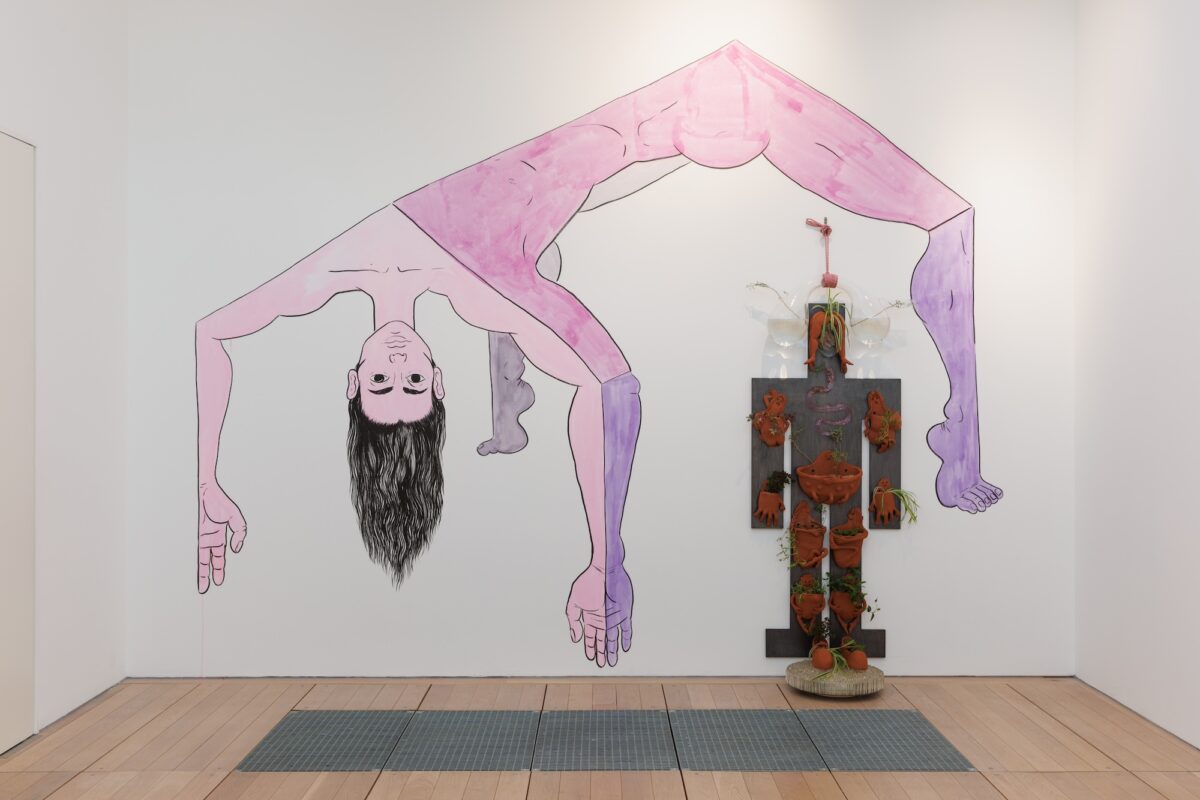
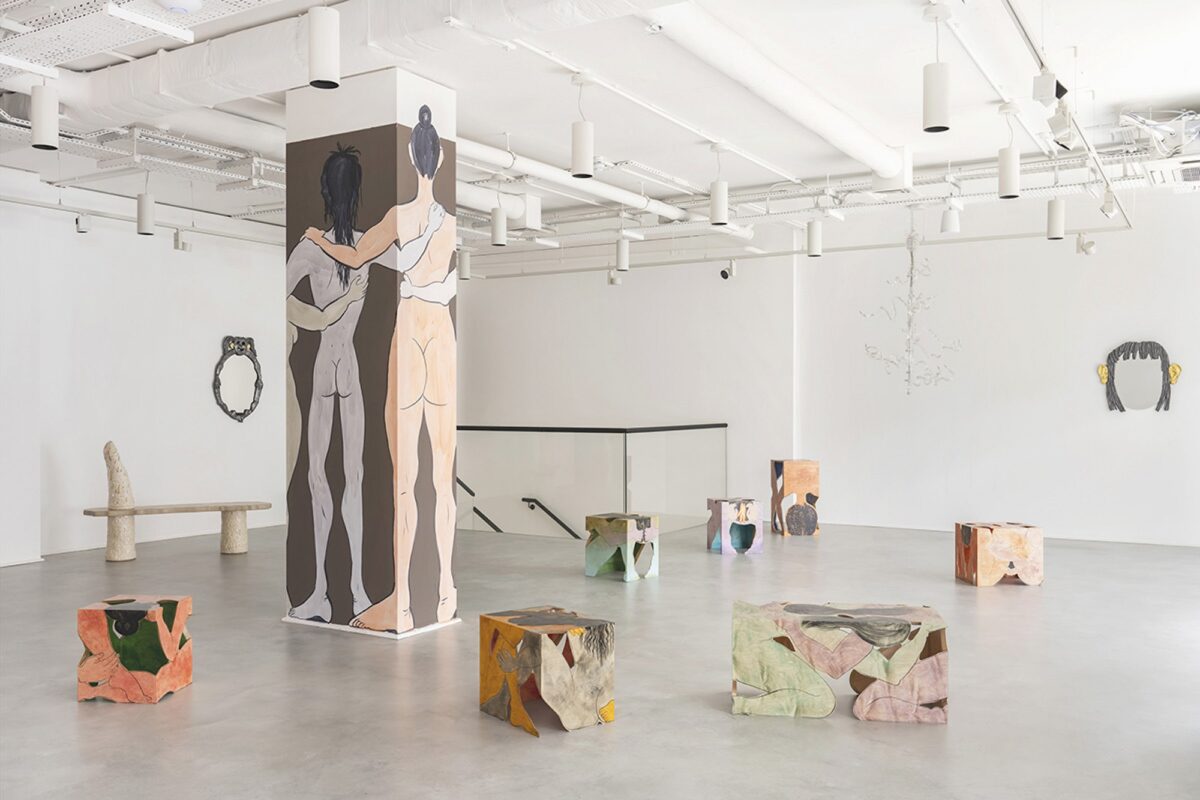
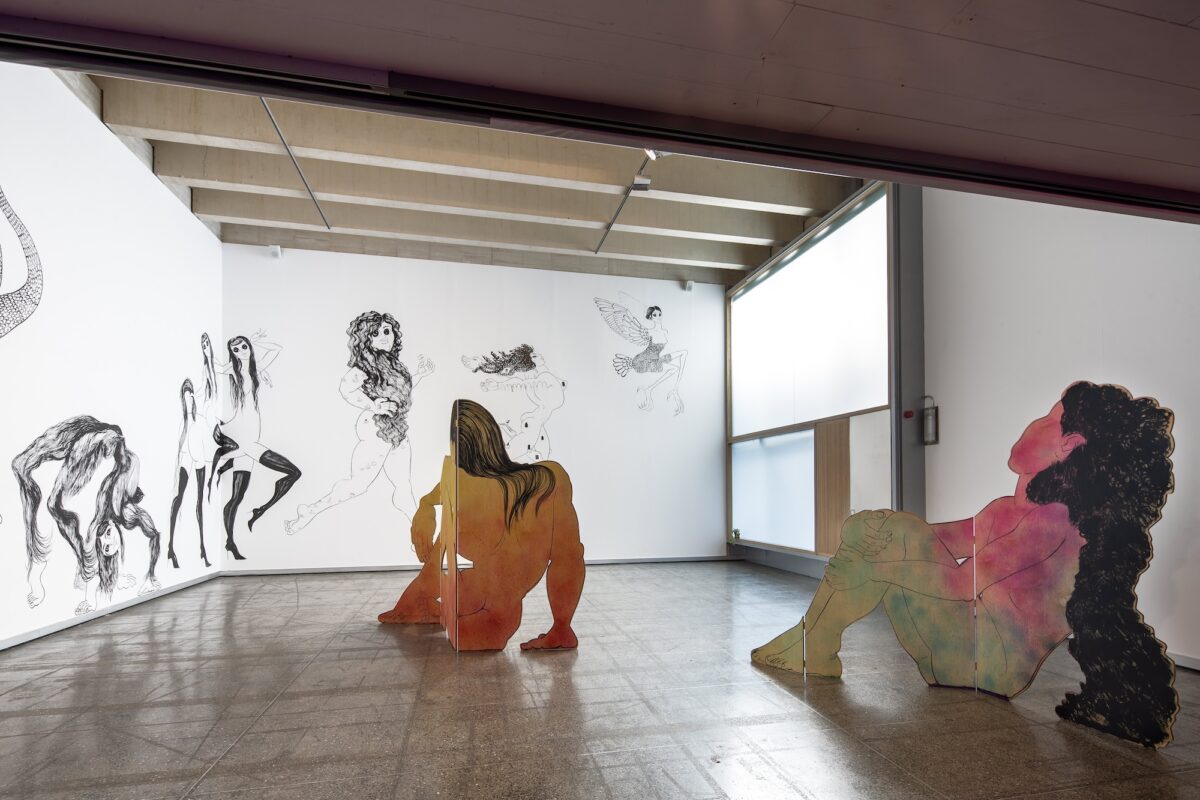
Regardless of the medium, you are able to construct enthusiastic ecosystems with your exhibitions. You do not simply place a canvas on a wall. Do you have an idea of where such a commitment to world-building comes from?
I think it comes from my love of science fiction, especially the ones that are about time travelling like Kindred by Octavia E Butler, or Slaughterhouse-Five. I make installations combining different elements to create an immersive space, to teleport the visitors to another world that operates with different conventions, that makes us question our own.
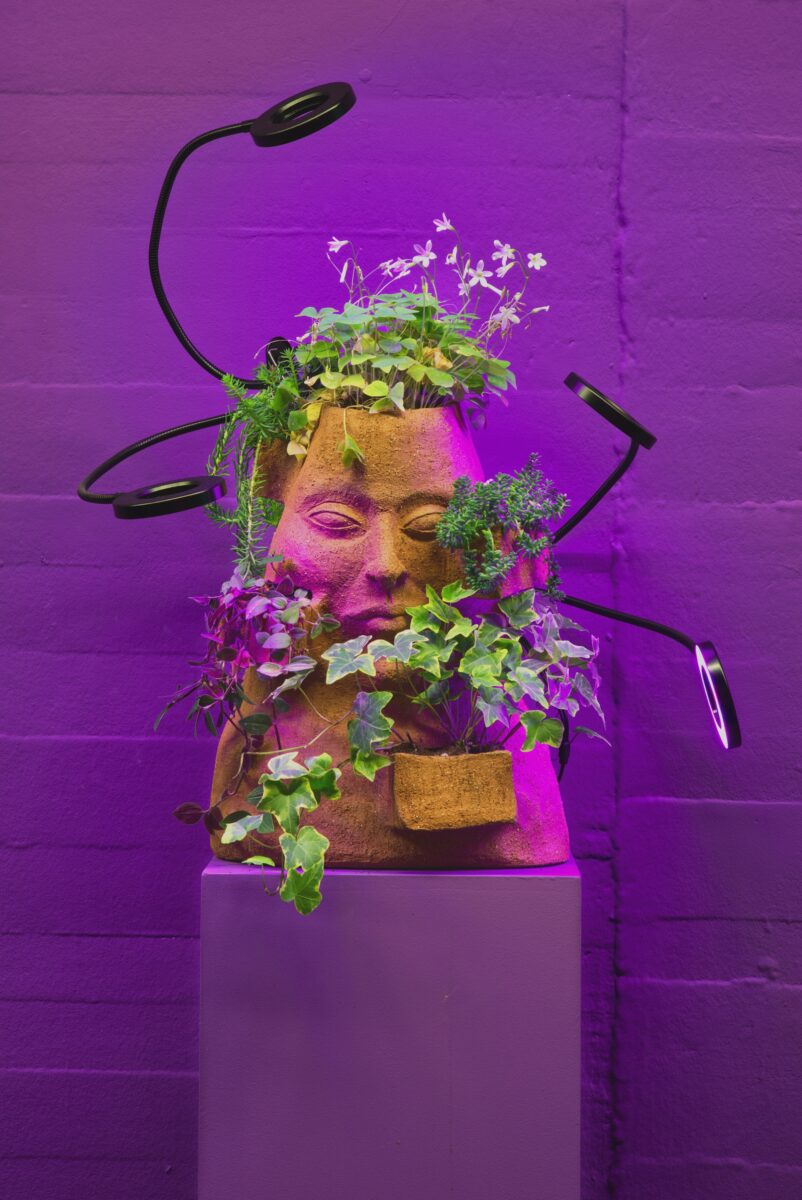
Can you share any ideas or upcoming projects that you are currently working towards?
I am working on a few projects so I will do a selection:
In August I will be presenting an outdoor sculpture for Coster art i natura, I think my biggest sculpture so far, is a femme giant made in steel, guarding gently the side of the mountain where she lives. Coster will be a not-for-profit artist residency space, with a sculpture garden in the beautiful Pollensa in Mallorca, run by the local artist Amador Magraner.
In September I will be in a duo show with Jongwan Jang at Cylinder gallery in Seoul, Alice, still in Wonderland. I have been making really complex ink drawings about dualities and life cycles. In September I am also part the 5th anniversary show Creatures of Comfort at the Odunpazari Modern Museum in Turkey
In March I will be in a group show Trust Issues, a show about vulnerability curated by Nina Chkareuli Mdivani at Kornfeld Galerie in Berlin.
I am working on A Joyful Parasite, curated by Niomi Fairweather for spring 2025 at The Baltic in Newcastle. I am super excited about this solo show, it is going to be about transformation and metamorphosis. I think it comes from reflection about how we perceive the current moment as in mobile, but also looking at the idea of the villain in a relaxing atmosphere.
And in the same month I will be part of a biennial, can’t disclose the name yet.
I will continue researching about perceptions of time in different cultures and moments of history hybrids and always want to know more about joy.
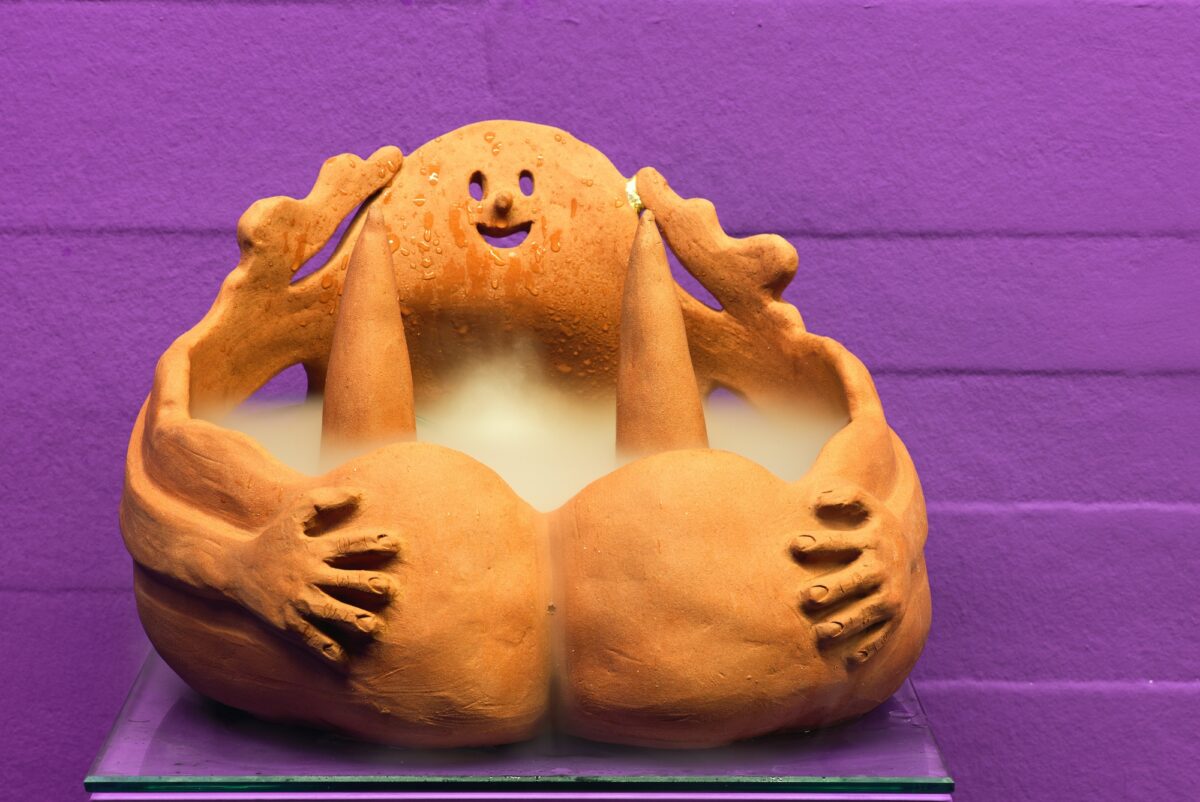
To learn more about Saelia Aparicio, follow her on Instagram at @saelia_aparicio and visit her website at saelito.com

